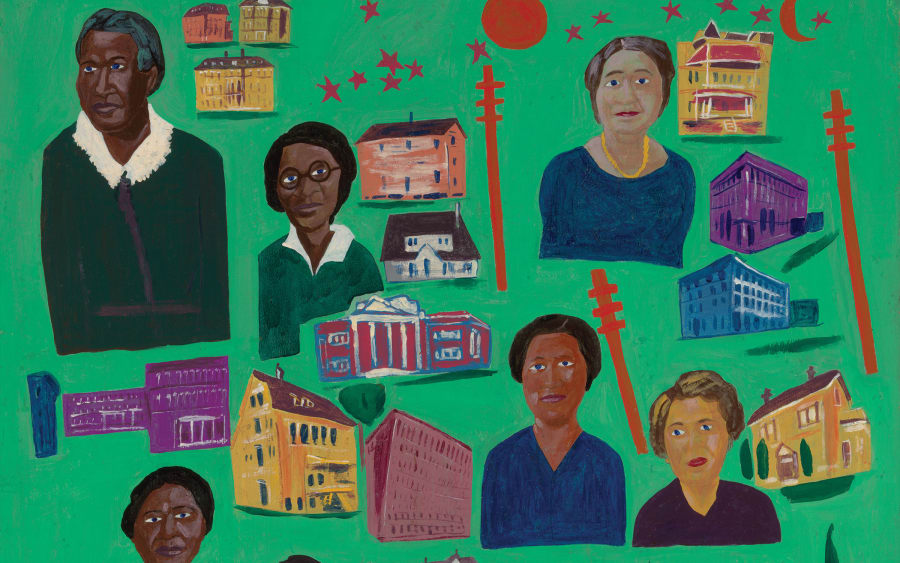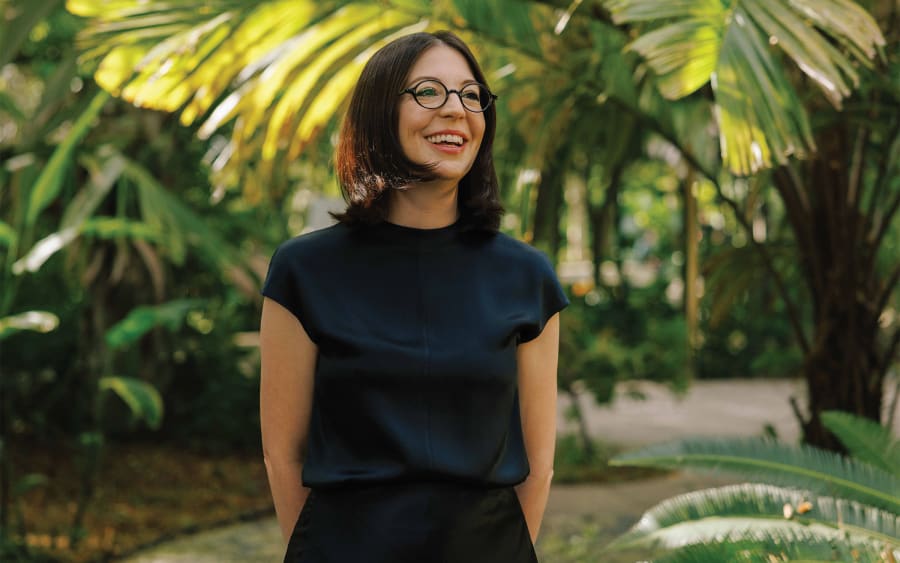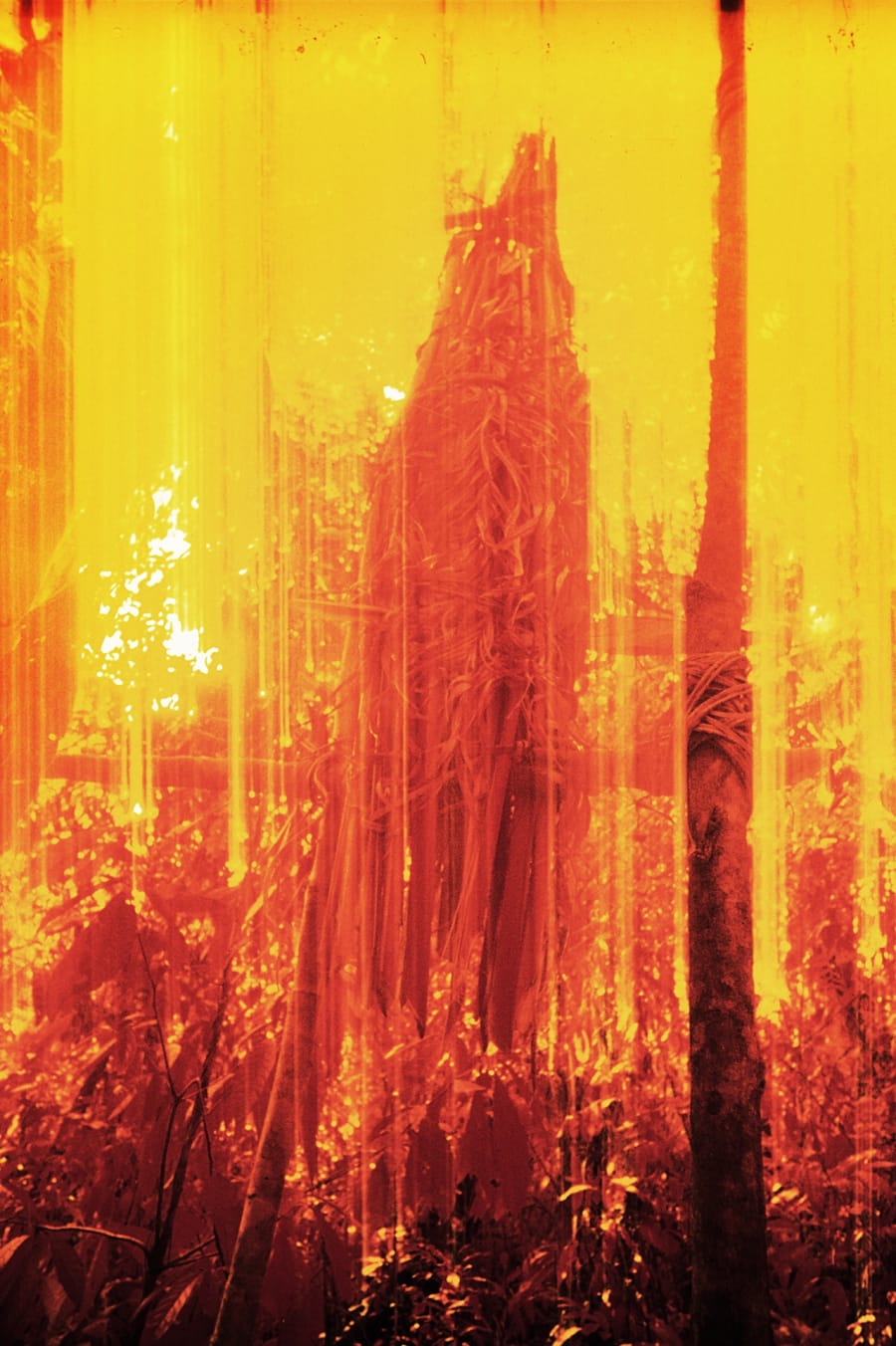‘“Winds of Yawanawá” is the project we are most proud of. My work in the Amazon with the Yawanawá community began a few years ago, but the ideas behind it are from much earlier. As a new media artist, I coined the term “data painting” in 2008. Since then, I have been speculating about the idea of data as a pigment. When I moved to Los Angeles to study at UCLA for my second MFA degree, I did a deep dive into data. I was in love with the concept of quantifiable nature as an input for a machine. It’s not so different from Monet when he mentioned atmosphere or painted water lilies, things he saw through his own eyes. In the age of AI, we can think about similar concepts, but with data.
‘I started to create wind data paintings in 2012, which turn data into the pigment of an artwork, but this pigment doesn’t dry – this pigment does not have Newtonian constraints. Of course, AI then came into the game, and in 2016, I became the artist in residence at Google, which was an incredible journey that allowed me to push my medium to the edge.
‘Eight years ago, I started collecting paintings about nature. I believe nature is the most inspiring thing, and you can see this in many of my works from corals underwater to national parks and flowers. At the same time, my studio partner and wife explained to me what Amazonia means. We traveled there and I became fascinated by the beautiful cultures and nature that we saw.
‘Four years ago, during the pandemic, I was able to connect with Yawanawá families. I got to know them very well and I was blown away by how deeply they have protected nature for centuries, as do many Indigenous people.
‘A few years later, my wife and I were invited to their village and we spent a few weeks in the forest with them. That visit was a life-changing experience – no phone, no laptop, no technology. Well, no technologies that I know how to use, but we did have the ancestral technologies and wisdom of the Yawanawá. It was a fascinating time. They hosted us, opened their homes and shared their language, culture, wisdom and spirituality. It was the most inspiring experience in my life and I owe so much to the Yawanawá.
‘This trip is where “Winds of Yawanawá” began. The project was commissioned by Impact One’s Possible Futures, a program that shows the importance of Indigenous wisdom in the stewardship of the natural world. The Yawanawá community is 1,000 people across three villages. Chief Nixiwaka is my mentor, my hero, and I can now say my family member, because they gave me a Yawanawá name.
‘Over time, we came to understand that life in the forest can be challenging. The Yawanawá do everything they can to protect us, protect nature and protect their culture. As a human living in this society, I wanted to learn about the dreams of the Yawanawá people. They were very open to collaboration, and we designed “Winds of Yawanawá” together to reflect these dreams and raise money for their community.
‘For “Winds of Yawanawá”, we create an NFT collection of 1,000 unique data paintings and one data sculpture in an edition of three that focus on the Yawanawá’s beautiful culture and language. There are so many artists in the forest making paintings. You can see animals, beautiful patterns, bird feathers and even people in these artworks. We asked the Yawanawá people how we can represent their culture, so sisters Nawashahu and Mukashahu created about 30 artworks for us.
‘We knew we wanted to produce a much higher number to generate more funds, so we used these original artworks alongside our work to train AI and create more visuals that blend our visions, which is how we got to 1,000. The Yawanawá artists loved this use of AI, and for us, it was a fascinating experiment. Then, we incorporated another innovative layer by adding movement to the visuals based on weather data from sensors in the sacred Aldeia Sagrada village. These sensors measure things like wind and temperature, and this data activates the beautiful artwork. With this technology, we gave nature and the forest a voice.
‘We released the collection and had an incredible response. We raised $2.5 million for the Yawanawá community using blockchain technology, so there is guaranteed protection and transparency. They are using these funds to build up their village, create their first museum, first school and hopefully more. This aspect of the project is very important to me. I don’t use technology blindly. Technology has to have a human context and it has to give value back to all of us – no barriers and no borders. It has to have a positive impact that is not just financially positive. “Winds of Yawanawá” raises money and it preserves culture. We are opening new perceptions of their community for society. People are learning what it means to live in the rainforest and to live with and protect nature. The rainforests are the lungs of humanity, and the people who live there are the hearts of humanity.
‘This year in Davos at the World Economic Forum, we were invited to present this project and Chiefs Nixiwaka, Putanny and Isku Kua were brought as cultural leaders. In 50 years, they were the first Indigenous people officially presenting in the forum. That is the power of art. That is the value that we need for humanity.’
This article was originally commissioned for the 2024 issue of the Art Basel Miami Beach Magazine.
Art Basel Miami Beach will take place from December 6 to 8, 2024. Learn more here.
Annabel Keenan is a New York City–based writer specializing in contemporary art, design history, and sustainability. Her work has appeared in The Art Newspaper, The Financial Times, Cultured, The Brooklyn Rail, Hyperallergic, and others.
Caption for header image: Refik Anadol at the Serpentine North Gallery for his solo exhibit ‘Echoes of the Earth: Living Archive’ Courtesy of the artist.
Published on November 12, 2024.


